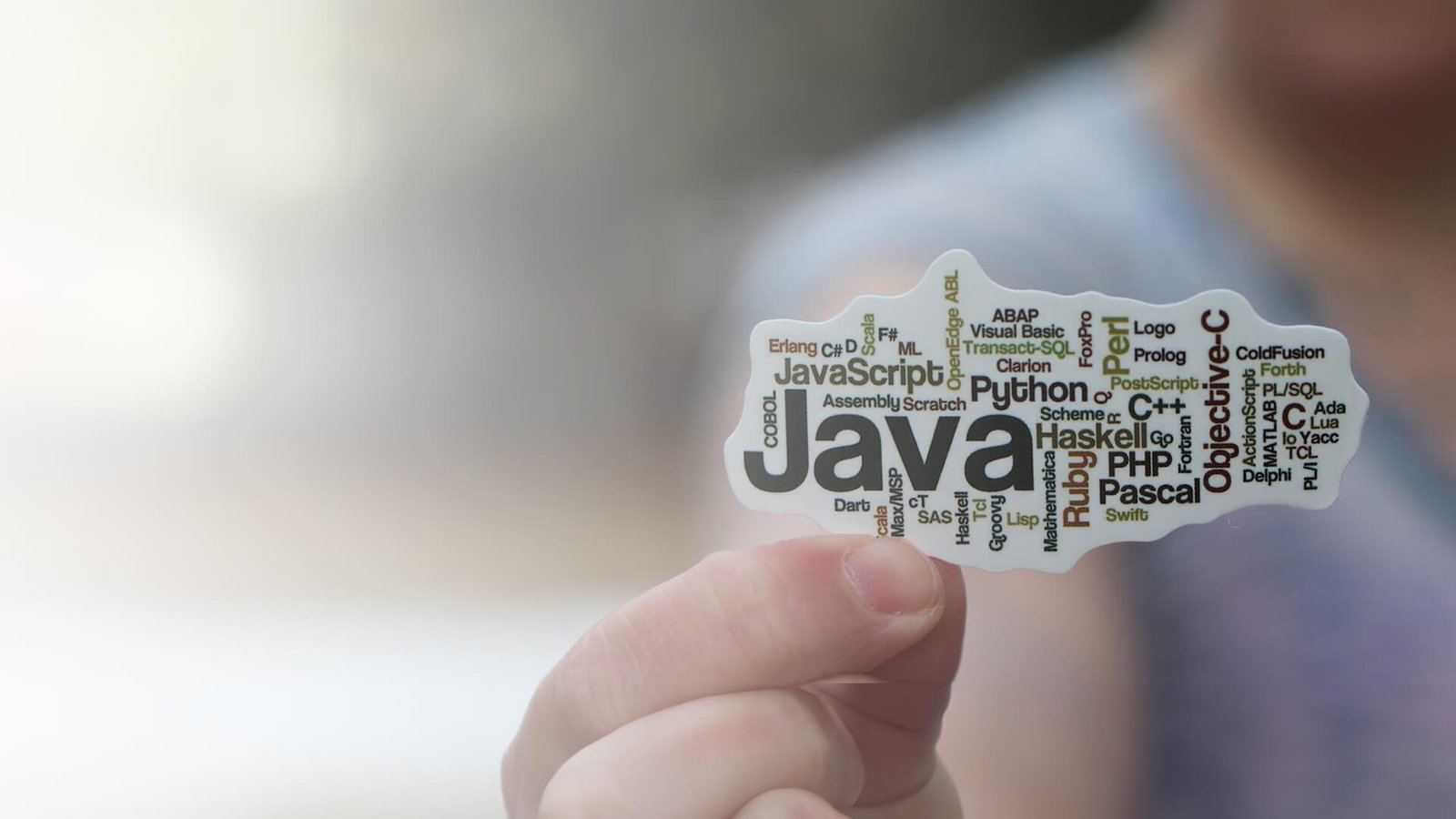
The Evolution of Programming Languages
The landscape of software development has undergone a profound transformation since the inception of programming languages. From the rudimentary machine code of the early computers to high-level languages that prioritize developer efficiency and readability, the evolution of programming languages reflects the changing needs of the industry and the increasing complexity of technology.
This article delves into the historical development of programming languages, examines key trends shaping the current landscape, and explores emerging languages that are making significant impacts in the field.
A Brief History of Programming Languages
Early Days: Machine Code and Assembly Language
In the earliest days of computing, programming was an arduous process involving direct manipulation of machine code, which consists of binary instructions that a computer’s hardware can understand. Programmers had to write code in 0s and 1s, making this approach cumbersome and highly error-prone. Recognizing the need for a more manageable way to write programs, the concept of assembly language emerged in the 1950s. Assembly language offered a more readable set of instructions using mnemonics (like ADD, SUB, and MOV), allowing programmers to write code that was much easier to understand and maintain, although it still required detailed knowledge of the underlying hardware architecture.
The Rise of High-Level Languages
The 1960s marked a pivotal turning point with the introduction of high-level programming languages. Languages such as FORTRAN (Formula Translation) and COBOL (Common Business-Oriented Language) emerged, enabling programmers to write code that resembled human language more closely. These languages abstracted away hardware details, allowing developers to focus on solving complex problems rather than wrestling with machine-specific instructions.
FORTRAN was particularly influential in scientific and engineering applications due to its efficiency in handling mathematical computations. COBOL, on the other hand, was designed for business applications, emphasizing data processing and file handling. The introduction of these languages laid the groundwork for the development of more sophisticated programming paradigms.
The 1970s and 1980s: Structured Programming
As software systems became increasingly complex, the need for better organization and structure in code became evident. This led to the development of structured programming concepts, prominently seen in languages like C. C introduced fundamental constructs such as functions, loops, and conditionals, promoting code reusability and modularity. Its portability and efficiency made it an ideal choice for system programming and application development.
During this era, the emergence of object-oriented programming (OOP) languages like Smalltalk represented a significant shift in how software was designed. OOP focused on modeling real-world entities, encapsulating data and behavior within objects. This approach improved code organization, making it easier to manage complex systems by breaking them into smaller, more manageable components.
The 1990s and 2000s: The Internet and Dynamic Languages
The rise of the internet in the 1990s brought about new demands for programming languages. Java emerged as a key player during this time, offering platform independence through its “write once, run anywhere” philosophy. This meant that Java applications could be executed on any device that had a Java Virtual Machine (JVM), making it highly appealing for web and enterprise applications.
The 1990s also saw the advent of scripting languages like JavaScript, which enabled dynamic content on web pages, transforming how users interacted with the web. JavaScript’s flexibility and integration with HTML and CSS revolutionized web development, leading to the creation of interactive and dynamic websites.
The 2000s further diversified the programming landscape with languages like Python and Ruby, which emphasized simplicity and productivity. Python’s clean syntax and extensive libraries made it a favorite for web development, data analysis, and scientific computing, while Ruby’s elegance and developer-friendly features contributed to the popularity of web frameworks like Ruby on Rails.
Current Trends in Programming Languages
1. Increased Focus on Developer Experience
Today, there is a strong emphasis on developer experience (DevEx). Programming languages and frameworks are increasingly designed to make coding more enjoyable and efficient. Tools that offer integrated development environments (IDEs), advanced code editors, and intelligent code completion are becoming standard. Languages like Kotlin (for Android development) and Swift (for iOS development) have been designed with modern developers in mind, prioritizing ease of use, safety, and concise syntax.
Kotlin, for example, simplifies many common tasks that can be cumbersome in Java, such as null safety and data handling. Swift offers a clean and expressive syntax, allowing developers to write less code while maintaining high performance.
2. Concurrency and Parallelism
With the advent of multi-core processors, programming languages are evolving to support concurrent and parallel programming models. Languages like Go and Rust are built with these principles at their core, enabling developers to write efficient applications that can handle multiple tasks simultaneously with less complexity.
Go’s goroutines, for instance, make it easy to perform asynchronous operations, allowing developers to create scalable network applications with minimal effort. Rust, with its emphasis on memory safety and zero-cost abstractions, is gaining traction for system-level programming where performance and safety are critical.
3. Rise of Functional Programming
Functional programming paradigms are gaining popularity as developers recognize their benefits in managing complexity and promoting immutability. Languages such as Scala, Haskell, and Elixir embrace functional programming principles, allowing developers to write cleaner, more maintainable code. This approach also aligns well with distributed systems and microservices architecture, which are increasingly common in modern application development.
Functional programming encourages a declarative style of coding, where developers express what they want to achieve rather than how to achieve it. This shift not only improves readability but also makes reasoning about code behavior easier, leading to fewer bugs and enhanced maintainability.
4. Domain-Specific Languages (DSLs)
As industries become more specialized, there is an increasing trend toward domain-specific languages (DSLs). DSLs are tailored for specific application domains, enabling developers to express solutions more naturally. For example, SQL (Structured Query Language) is a DSL designed for managing and querying databases, while HTML and CSS are used for structuring and styling web pages, respectively.
Emerging DSLs like GraphQL have transformed API development by allowing clients to request only the data they need, reducing over-fetching and under-fetching of data. This capability enhances efficiency and flexibility in managing data interactions between client and server.
5. Emphasis on Security and Safety
In an age where cybersecurity threats are rampant, programming languages are increasingly focusing on security features. Languages like Rust and TypeScript prioritize safety by providing built-in mechanisms to prevent common vulnerabilities. Rust’s ownership model eliminates issues like null pointer dereferencing and buffer overflows, making it a strong choice for secure system programming.
TypeScript enhances JavaScript by adding static types, allowing developers to catch potential errors during the development phase rather than at runtime. This focus on safety aligns with the growing demand for secure coding practices in an era of heightened security awareness.
Emerging Languages in Software Development
1. Rust
Rust has gained significant traction in recent years due to its focus on safety and performance. It combines low-level control with high-level abstractions, making it ideal for system-level programming while ensuring memory safety through its ownership model. Rust’s strong community support and emphasis on reliability make it a compelling choice for developers working on performance-critical applications, such as game engines, operating systems, and web servers.
The language’s unique approach to memory management—allowing developers to write safe concurrent code without a garbage collector—sets it apart from other languages. As a result, Rust has become a favorite among developers who prioritize both performance and safety.
2. Go
Developed by Google, Go (or Golang) has become a popular language for building scalable and efficient applications, particularly in cloud computing and microservices architecture. Its simple syntax, garbage collection, and powerful concurrency model make it suitable for developing high-performance systems.
Go’s built-in support for concurrent programming through goroutines simplifies the creation of applications that can handle multiple tasks simultaneously. Its fast compilation times and straightforward deployment processes have made it a favorite among developers working on cloud-native applications and distributed systems.
3. Julia
Julia is a high-level, high-performance programming language designed specifically for numerical and scientific computing. Its ability to handle complex mathematical calculations with speed makes it a favorite among data scientists and researchers. Julia’s syntax is designed to be intuitive, allowing users to write code that is both expressive and efficient.
One of Julia’s standout features is its multiple dispatch system, which allows functions to be specialized based on the types of all their arguments, enabling highly optimized code for a wide variety of applications. Julia’s seamless integration with existing libraries from other languages, such as Python and R, allows it to be a versatile tool in the data analysis and machine learning toolkit.
4. Elixir
Elixir, built on the Erlang Virtual Machine (BEAM), is known for its capabilities in building scalable and maintainable applications, particularly in real-time systems. It embraces functional programming principles and offers excellent support for concurrency, making it a strong choice for web applications and microservices.
Elixir’s syntax is clean and easy to read, which contributes to developer productivity. Its robust ecosystem, including the Phoenix framework for building web applications, has positioned Elixir as a leading choice for developers seeking to create fault-tolerant and highly concurrent applications.
5. TypeScript
TypeScript is a superset of JavaScript that introduces static typing, making it easier to catch errors during development. As JavaScript continues to dominate web development, TypeScript has gained popularity for its ability to improve code quality and maintainability in large codebases. It offers developers the best of both worlds—leveraging the flexibility of JavaScript while providing the safety and structure of a statically typed language.
TypeScript’s growing ecosystem, including frameworks like Angular and React, enhances its adoption in enterprise-level applications where large teams collaborate on complex projects. Its compatibility with existing JavaScript code allows for a gradual migration to TypeScript, making it an attractive option for developers looking to enhance their projects.
The Future of Programming Languages
The future of programming languages is likely to be shaped by several factors:
1. Increasing Interoperability
As technology continues to evolve, the demand for languages that can seamlessly interact with one another will grow. This interoperability will be crucial in enabling developers to leverage the strengths of various languages while maintaining efficiency in multi-language ecosystems. The emergence of platforms that support polyglot programming—allowing developers to use multiple languages within a single application—will facilitate this trend.
2. Low-Code and No-Code Solutions
The rise of low-code and no-code platforms is changing the landscape of software development. These tools enable non-technical users to create applications without extensive programming knowledge, leading to a democratization of software development. As these platforms mature, they will likely influence the development of programming languages that support rapid application development while ensuring scalability and maintainability.
Low-code and no-code solutions focus on visual programming and drag-and-drop interfaces, allowing users to build applications quickly. This trend has the potential to free professional developers from mundane tasks, enabling them to focus on more complex and creative aspects of software design.
3. Artificial Intelligence and Machine Learning Integration
As artificial intelligence (AI) and machine learning (ML) continue to play pivotal roles in technology, programming languages will increasingly incorporate features that facilitate the development of intelligent applications. This integration may lead to the emergence of new languages or enhancements to existing ones, focused on simplifying the creation of AI-driven systems.
For example, languages like Python have become popular in the AI community due to their rich libraries and frameworks, such as TensorFlow and PyTorch. Future languages may prioritize built-in support for machine learning algorithms and data manipulation to further streamline the development of AI applications.
4. Community-Driven Development
The role of community in shaping programming languages will likely expand. Open-source languages and frameworks are already being developed collaboratively, and this trend is expected to continue. Community input will drive language evolution, ensuring that they meet the changing needs of developers.
Collaborative development can lead to rapid innovation, as diverse perspectives contribute to language design and features. As more developers engage in open-source projects, the boundaries of programming languages will continue to evolve, fostering a rich ecosystem of tools and practices.
5. Sustainability in Software Development
As environmental concerns gain prominence, programming languages and development practices may increasingly emphasize sustainability. This trend could manifest in various ways, such as languages designed for energy efficiency or frameworks that promote the development of sustainable applications.
Developers may also prioritize practices that reduce resource consumption, such as optimizing algorithms for lower computational requirements or creating applications that minimize energy usage on devices. The growing awareness of sustainability in technology will likely influence the evolution of programming languages and tools.
Conclusion
The evolution of programming languages reflects the changing landscape of technology and the needs of developers. From early machine code to the high-level languages we see today, each iteration has aimed to improve efficiency, readability, and adaptability. As trends like functional programming, domain-specific languages, and an increased focus on developer experience shape the current landscape, emerging languages such as Rust, Go, and Julia are redefining how software is developed.
The future of programming languages is poised to be dynamic and transformative, influenced by factors such as interoperability, low-code solutions, AI integration, community-driven development, and sustainability. As developers navigate this ever-evolving landscape, they will continue to embrace languages that enhance productivity and enable innovative solutions, ultimately driving the next wave of software development. By understanding these trends and emerging languages, developers can position themselves for success in an increasingly complex and competitive environment.



